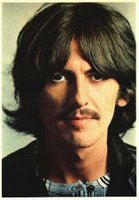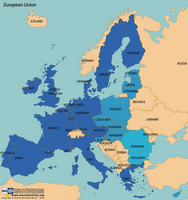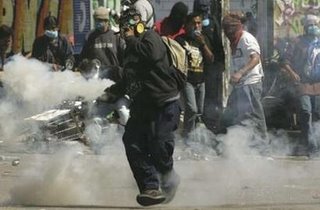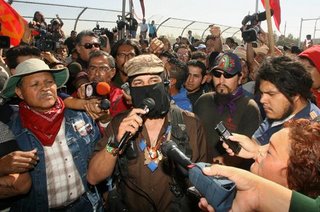 Giovanni di Paolo - Madonna of Humility, 1435.
Giovanni di Paolo - Madonna of Humility, 1435.
This morning, I re-read Martin Luther King's "A Christmas Sermon for Peace," and was moved once again by its beauty and intelligence. It was the last Christmas sermon he delivered, on Christmas Eve, 1967, only a few months before his death.
Peace, everyone, and have a beautiful Holy-Day.
A Christmas Sermon on Peace
Dr. King first delivered this sermon at Ebenezer Baptist Church, where he served as co-pastor. On Christmas Eve, 1967, the Canadian Broadcasting Corporation aired this sermon as part of the seventh annual Massey Lectures.
Peace on Earth. . .
This Christmas season finds us a rather bewildered human race. We have neither peace within nor peace without. Everywhere paralyzing fears harrow people by day and haunt them by night. Our world is sick with war; everywhere we turn we see its ominous possibilities. And yet, my friends, the Christmas hope for peace and good will toward all men can no longer be dismissed as a kind of pious dream of some utopian. If we don't have good will toward men in this world, we will destroy ourselves by the misuse of our own instruments and our own power. Wisdom born of experience should tell us that war is obsolete. There may have been a time when war served as a negative good by preventing the spread and growth of an evil force, but the very destructive power of modern weapons of warfare eliminates even the possibility that war may any longer serve as a negative good. And so, if we assume that life is worth living, if we assume that mankind has a right to survive, then we must find an alternative to war—and so let us this morning explore the conditions for peace. Let us this morning think anew on the meaning of that Christmas hope: “Peace on Earth, Good Will toward Men.” And as we explore these conditions, I would like to suggest that modern man really go all out to study the meaning of nonviolence, its philosophy and its strategy.
We have experimented with the meaning of nonviolence in our struggle for racial justice in the United States, but now the time has come for man to experiment with nonviolence in all areas of human conflict, and that means nonviolence on an international scale.
Now let me suggest first that if we are to have peace on earth, our loyalties must become ecumenical rather than sectional. Our loyalties must transcend our race, our tribe, our class, and our nation; and this means we must develop a world perspective. No individual can live alone; no nation can live alone, and as long as we try, the more we are going to have war in this world. Now the judgment of God is upon us, and we must either learn to live together as brothers or we are all going to perish together as fools.
Yes, as nations and individuals, we are interdependent. I have spoken to you before of our visit to India some years ago. It was a marvelous experience; but I say to you this morning that there were those depressing moments. How can one avoid being depressed when one sees with one's own eyes evidences of millions of people going to bed hungry at night? How can one avoid being depressed when one sees with ones own eyes thousands of people sleeping on the sidewalks at night? More than a million people sleep on the sidewalks of Bombay every night; more than half a million sleep on the sidewalks of Calcutta every night. They have no houses to go into. They have no beds to sleep in. As I beheld these conditions, something within me cried out: “Can we in America stand idly by and not be concerned?” And an answer came: “Oh, no!” And I started thinking about the fact that right here in our country we spend millions of dollars every day to store surplus food; and I said to myself: “I know where we can store that food free of charge—in the wrinkled stomachs of the millions of God's children in Asia, Africa, Latin America, and even in our own nation, who go to bed hungry at night.”
It really boils down to this: that all life is interrelated. We are all caught in an inescapable network of mutuality, tied into a single garment of destiny. Whatever affects one directly, affects all indirectly. We are made to live together because of the interrelated structure of reality. Did you ever stop to think that you can't leave for your job in the morning without being dependent on most of the world? You get up in the morning and go to the bathroom and reach over for the sponge, and that's handed to you by a Pacific islander. You reach for a bar of soap, and that's given to you at the hands of a Frenchman. And then you go into the kitchen to drink your coffee for the morning, and that's poured into your cup by a South American. And maybe you want tea: that's poured into your cup by a Chinese. Or maybe you're desirous of having cocoa for breakfast, and that's poured into your cup by a West African. And then you reach over for your toast, and that's given to you at the hands of an English-speaking farmer, not to mention the baker. And before you finish eating breakfast in the morning, you've depended on more than half of the world. This is the way our universe is structured, this is its interrelated quality. We aren't going to have peace on earth until we recognize this basic fact of the interrelated structure of all reality.
Now let me say, secondly, that if we are to have peace in the world, men and nations must embrace the nonviolent affirmation that ends and means must cohere. One of the great philosophical debates of history has been over the whole question of means and ends. And there have always been those who argued that the end justifies the means, that the means really aren't important. The important thing is to get to the end, you see.
So, if you're seeking to develop a just society, they say, the important thing is to get there, and the means are really unimportant; any means will do so long as they get you there? they may be violent, they may be untruthful means; they may even be unjust means to a just end. There have been those who have argued this throughout history. But we will never have peace in the world until men everywhere recognize that ends are not cut off from means, because the means represent the ideal in the making, and the end in process, and ultimately you can't reach good ends through evil means, because the means represent the seed and the end represents the tree.
It's one of the strangest things that all the great military geniuses of the world have talked about peace. The conquerors of old who came killing in pursuit of peace, Alexander, Julius Caesar, Charlemagne, and Napoleon, were akin in seeking a peaceful world order. If you will read Mein Kampf closely enough, you will discover that Hitler contended that everything he did in Germany was for peace. And the leaders of the world today talk eloquently about peace. Every time we drop our bombs in North Vietnam, President Johnson talks eloquently about peace. What is the problem? They are talking about peace as a distant goal, as an end we seek, but one day we must come to see that peace is not merely a distant goal we seek, but that it is a means by which we arrive at that goal. We must pursue peaceful ends through peaceful means. All of this is saying that, in the final analysis, means and ends must cohere because the end is preexistent in the means, and ultimately destructive means cannot bring about constructive ends.
Now let me say that the next thing we must be concerned about if we are to have peace on earth and good will toward men is the nonviolent affirmation of the sacredness of all human life. Every man is somebody because he is a child of God. And so when we say “Thou shalt not kill,” we're really saying that human life is too sacred to be taken on the battlefields of the world. Man is more than a tiny vagary of whirling electrons or a wisp of smoke from a limitless smoldering. Man is a child of God, made in His image, and therefore must be respected as such. Until men see this everywhere, until nations see this everywhere, we will be fighting wars. One day somebody should remind us that, even though there may be political and ideological differences between us, the Vietnamese are our brothers, the Russians are our brothers, the Chinese are our brothers; and one day we've got to sit down together at the table of brotherhood. But in Christ there is neither Jew nor Gentile. In Christ there is neither male nor female. In Christ there is neither Communist nor capitalist. In Christ, somehow, there is neither bound nor free. We are all one in Christ Jesus. And when we truly believe in the sacredness of human personality, we won't exploit people, we won't trample over people with the iron feet of oppression, we won't kill anybody.
There are three words for “love” in the Greek New Testament; one is the word “eros.” Eros is a sort of esthetic, romantic love. Plato used to talk about it a great deal in his dialogues, the yearning of the soul for the realm of the divine. And there is and can always be something beautiful about eros, even in its expressions of romance. Some of the most beautiful love in all of the world has been expressed this way.
Then the Greek language talks about “philia,” which is another word for love, and philia is a kind of intimate love between personal friends. This is the kind of love you have for those people that you get along with well, and those whom you like on this level you love because you are loved.
Then the Greek language has another word for love, and that is the word “agape.” Agape is more than romantic love, it is more than friendship. Agape is understanding, creative, redemptive good will toward all men. Agape is an overflowing love which seeks nothing in return. Theologians would say that it is the love of God operating in the human heart. When you rise to love on this level, you love all men not because you like them, not because their ways appeal to you, but you love them because God loves them. This is what Jesus meant when he said, “Love your enemies.” And I'm happy that he didn't say, “Like your enemies,” because there are some people that I find it pretty difficult to like. Liking is an affectionate emotion, and I can't like anybody who would bomb my home. I can't like anybody who would exploit me. I can't like anybody who would trample over me with injustices. I can't like them. I can't like anybody who threatens to kill me day in and day out. But Jesus reminds us that love is greater than liking. Love is understanding, creative, redemptive good will toward all men. And I think this is where we are, as a people, in our struggle for racial justice. We can't ever give up. We must work passionately and unrelentingly for first-class citizenship. We must never let up in our determination to remove every vestige of segregation and discrimination from our nation, but we shall not in the process relinquish our privilege to love.
I've seen too much hate to want to hate, myself, and I've seen hate on the faces of too many sheriffs, too many white citizens' councilors, and too many Klansmen of the South to want to hate, myself; and every time I see it, I say to myself, hate is too great a burden to bear. Somehow we must be able to stand up before our most bitter opponents and say: “We shall match your capacity to inflict suffering by our capacity to endure suffering. We will meet your physical force with soul force. Do to us what you will and we will still love you. We cannot in all good conscience obey your unjust laws and abide by the unjust system, because non-cooperation with evil is as much a moral obligation as is cooperation with good, and so throw us in jail and we will still love you. Bomb our homes and threaten our children, and, as difficult as it is, we will still love you. Send your hooded perpetrators of violence into our communities at the midnight hour and drag us out on some wayside road and leave us half-dead as you beat us, and we will still love you. Send your propaganda agents around the country, and make it appear that we are not fit, culturally and otherwise, for integration, and we'll still love you. But be assured that we'll wear you down by our capacity to suffer, and one day we will win our freedom. We will not only win freedom for ourselves; we will so appeal to your heart and conscience that we will win you in the process, and our victory will be a double victory.”
If there is to be peace on earth and good will toward men, we must finally believe in the ultimate morality of the universe, and believe that all reality hinges on moral foundations. Something must remind us of this as we once again stand in the Christmas season and think of the Easter season simultaneously, for the two somehow go together. Christ came to show us the way. Men love darkness rather than the light, and they crucified him, and there on Good Friday on the cross it was still dark, but then Easter came, and Easter is an eternal reminder of the fact that the truth-crushed earth will rise again. Easter justifies Carlyle in saying, “No lie can live forever.” And so this is our faith, as we continue to hope for peace on earth and good will toward men: let us know that in the process we have cosmic companionship.
In 1963, on a sweltering August afternoon, we stood in Washington, D.C., and talked to the nation about many things. Toward the end of that afternoon, I tried to talk to the nation about a dream that I had had, and I must confess to you today that not long after talking about that dream I started seeing it turn into a nightmare. I remember the first time I saw that dream turn into a nightmare, just a few weeks after I had talked about it. It was when four beautiful, unoffending, innocent Negro girls were murdered in a church in Birmingham, Alabama. I watched that dream turn into a nightmare as I moved through the ghettos of the nation and saw my black brothers and sisters perishing on a lonely island of poverty in the midst of a vast ocean of material prosperity, and saw the nation doing nothing to grapple with the Negroes' problem of poverty. I saw that dream turn into a nightmare as I watched my black brothers and sisters in the midst of anger and understandable outrage, in the midst of their hurt, in the midst of their disappointment, turn to misguided riots to try to solve that problem. I saw that dream turn into a nightmare as I watched the war in Vietnam escalating, and as I saw so-called military advisors, sixteen thousand strong, turn into fighting soldiers until today over five hundred thousand American boys are fighting on Asian soil. Yes, I am personally the victim of deferred dreams, of blasted hopes, but in spite of that I close today by saying I still have a dream, because, you know, you can't give up in life. If you lose hope, somehow you lose that vitality that keeps life moving, you lose that courage to be, that quality that helps you go on in spite of all. And so today I still have a dream.
I have a dream that one day men will rise up and come to see that they are made to live together as brothers. I still have a dream this morning that one day every Negro in this country, every colored person in the world, will be judged on the basis of the content of his character rather than the color of his skin, and every man will respect the dignity and worth of human personality. I still have a dream that one day the idle industries of Appalachia will be revitalized, and the empty stomachs of Mississippi will be filled, and brotherhood will be more than a few words at the end of a prayer, but rather the first order of business on every legislative agenda. I still have a dream today that one day justice will roll down like water, and righteousness like a mighty stream. I still have a dream today that in all of our state houses and city halls men will be elected to go there who will do justly and love mercy and walk humbly with their God. I still have a dream today that one day war will come to an end, that men will beat their swords into plowshares and their spears into pruning hooks, that nations will no longer rise up against nations, neither will they study war any more. I still have a dream today that one day the lamb and the lion will lie down together and every man will sit under his own vine and fig tree and none shall be afraid. I still have a dream today that one day every valley shall be exalted and every mountain and hill will be made low, the rough places will be made smooth and the crooked places straight, and the glory of the Lord shall be revealed, and all flesh shall see it together. I still have a dream that with this faith we will be able to adjourn the councils of despair and bring new light into the dark chambers of pessimism. With this faith we will be able to speed up the day when there will be peace on earth and good will toward men. It will be a glorious day, the morning stars will sing together, and the sons of God will shout for joy.
 Giovanni di Paolo - Madonna of Humility, 1435.
Giovanni di Paolo - Madonna of Humility, 1435.














































